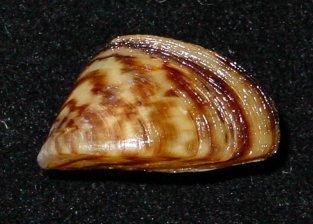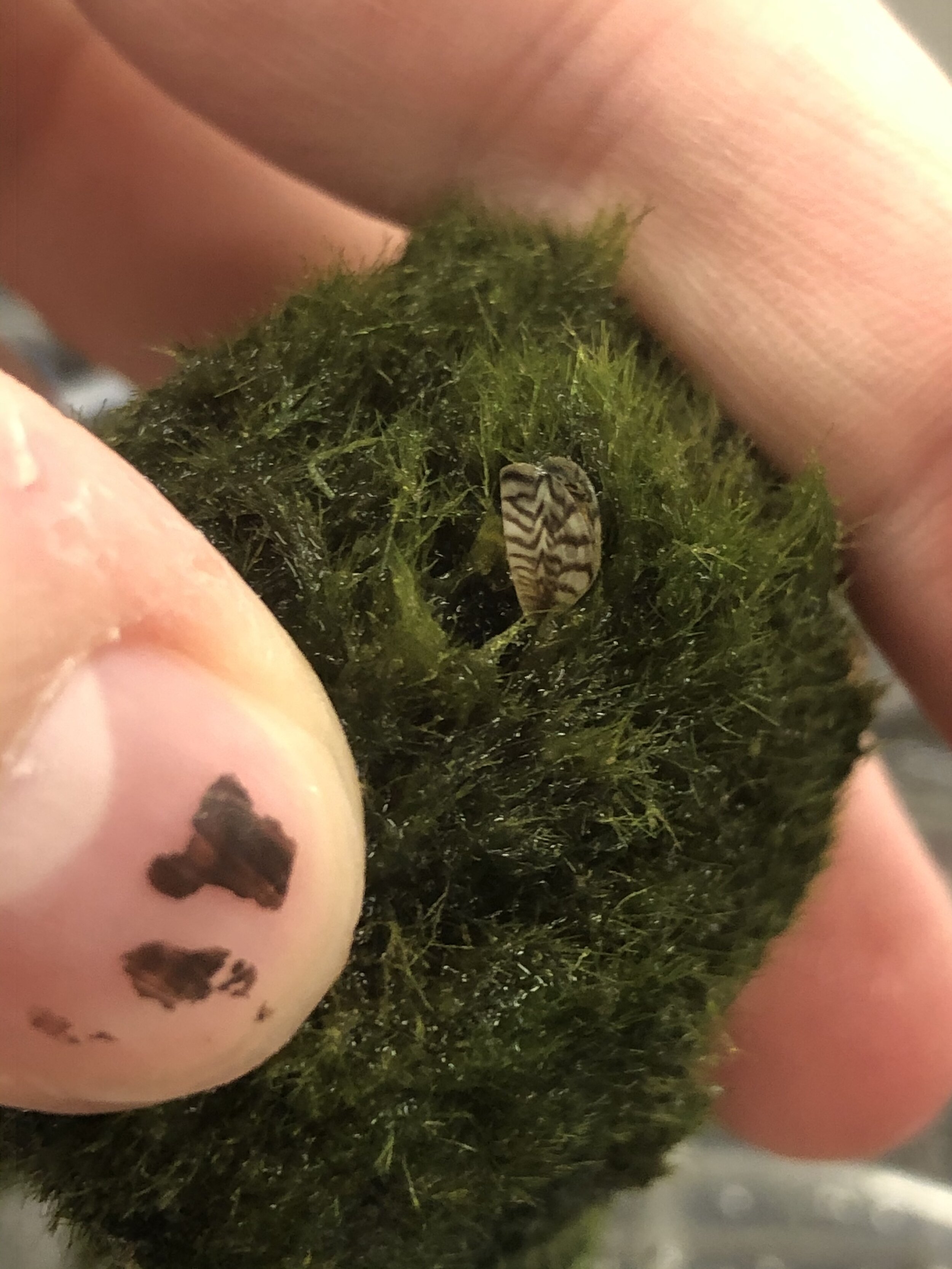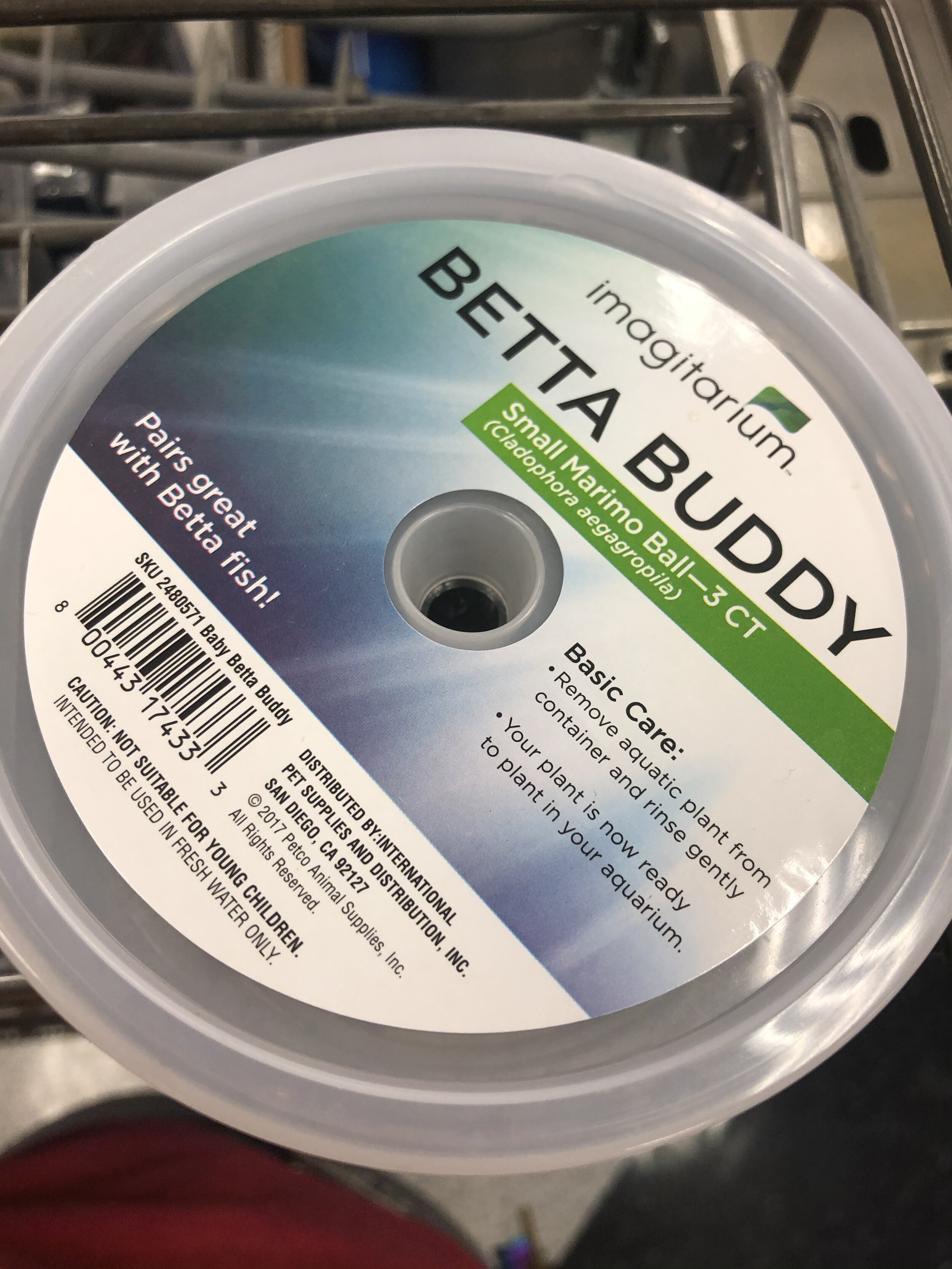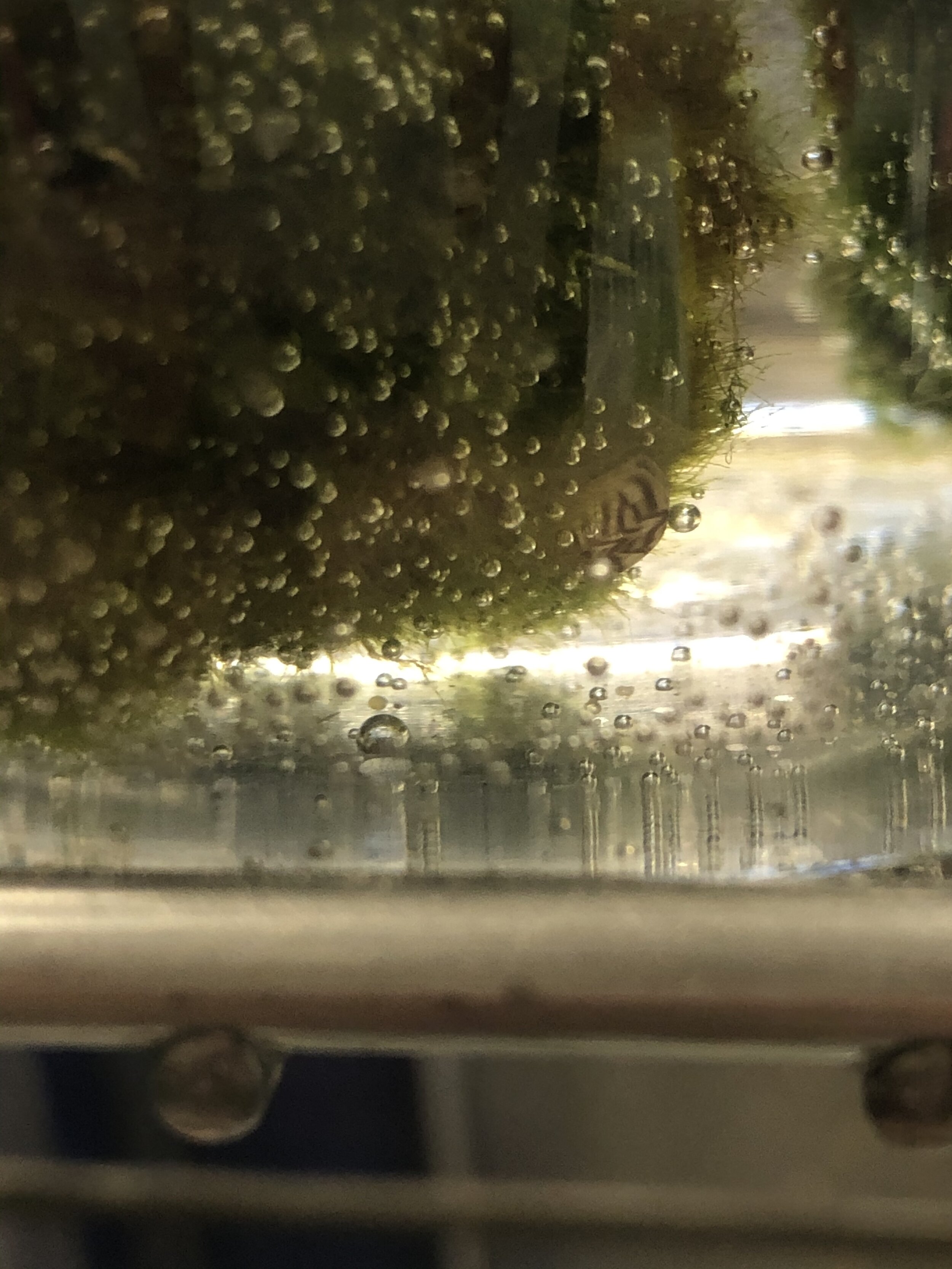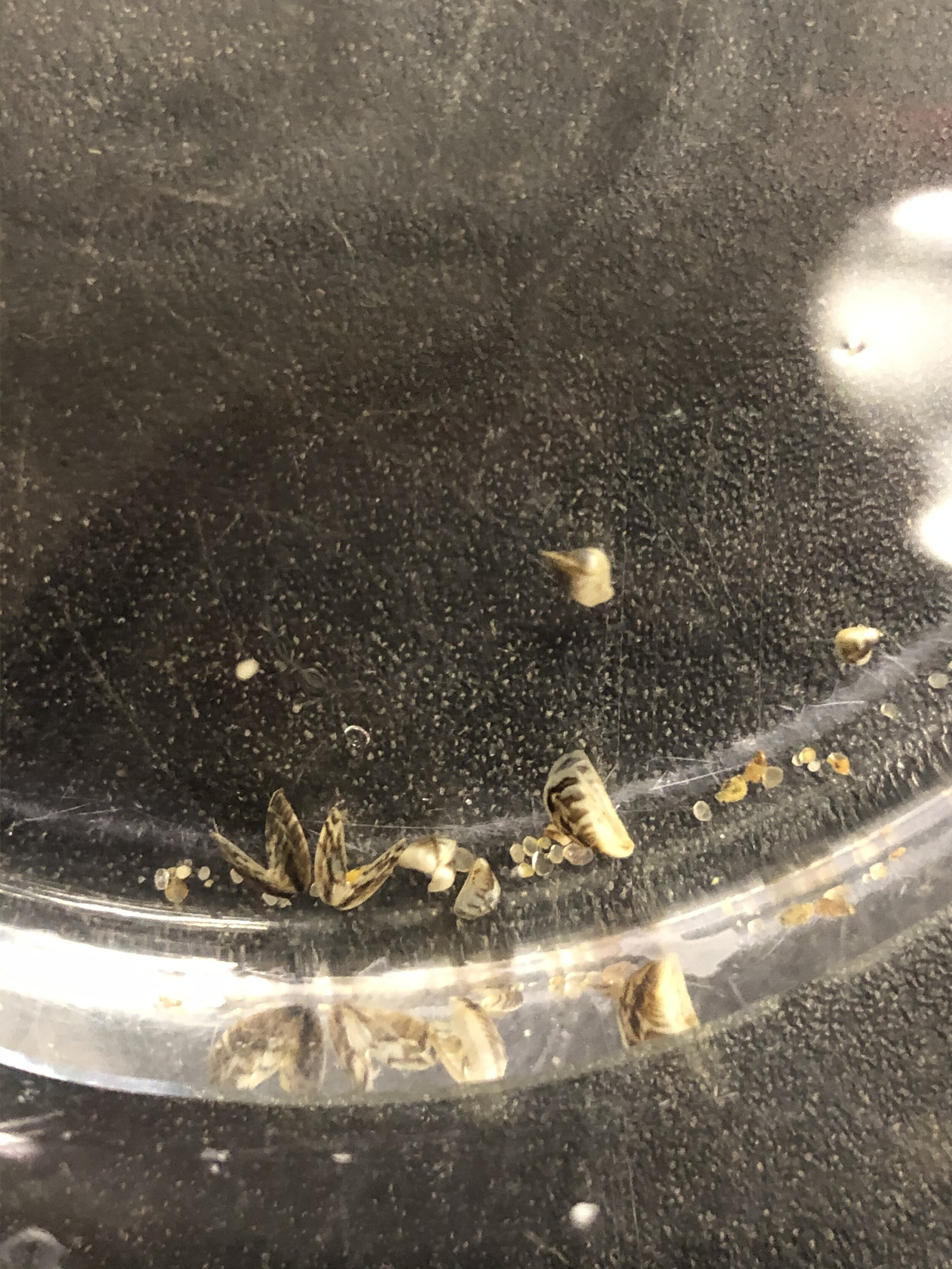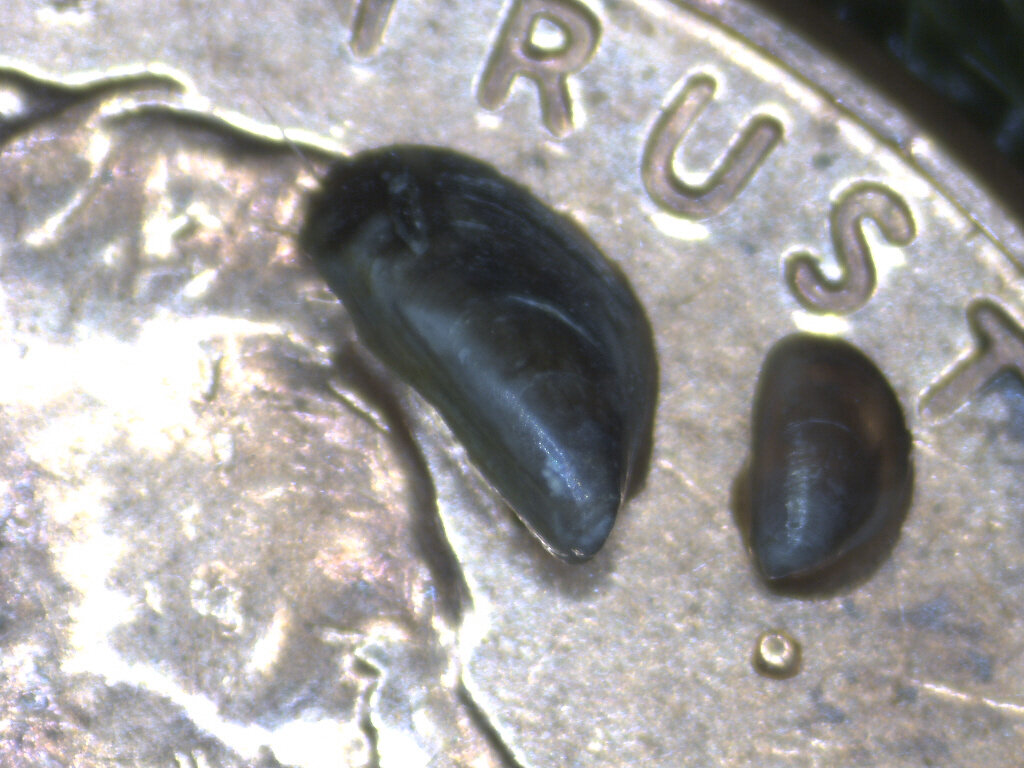Pest Alert: Zebra Mussels found in “Moss” Balls sold in Pet Stores
/Post last updated March 8, 2021
Invasive zebra mussels found in product(s) sold at aquarium and pet supply stores. Find out more about why this is an issue for Oregon and what you can do. We will update this post as additional information becomes available.
What are Zebra Mussels?
Zebra mussels (Dreissena polymorpha) are small, freshwater mollusks native to the Caspian and Black Sea of Eastern Europe. They are usually an inch or less in size, but can range from microscopic to two inches long. Zebra mussels are “D” shaped and have a dark and white zebra-like pattern on their shells. Learn more about Zebra and Quagga mussels on the Oregon Department of Fish & Wildlife Zebra/Quagga Mussel webpage.
Photo Credit: Amy Benson, U.S. Geological Survey
What Prompted this Pest Alert?
Zebra mussels were found attached and inside “Betta Buddy Marimo Ball” moss balls*. The first report of a contaminated moss ball came in from an attentive pet store employee in Seattle, WA. The Washington Department of Fish & Wildlife Enforcement quickly responded to and collected the moss ball’s from the store. After hearing this, the Oregon Department of Fish & Wildlife’s Invasive Species Program supervisor visited a store in the Salem, OR area on March 4th, 2021 and found viable zebra mussels in the product. As of March 4, 2021, zebra mussels found on moss balls have been reported in Alaska, Arizona, Arkansas, Colorado, California, Florida, Georgia, Idaho, Indiana, Iowa, Louisiana, Maryland, Montana, Nevada, Nebraska, New York, North Dakota, Oklahoma, Oregon, South Dakota, Texas, Virginia, Vermont, Wisconsin, Wyoming, and Washington.
The California-based distributor of the moss balls has been identified and Petco Regional Management has been contacted. Petco is being extremely cooperative and they are pulling the Moss ball from this distributor off the shelves so they cannot be sold. It’s important to note that this distributor is just one of many distributors that receive the same product from the same source, so please consider all moss balls imported from Ukraine from any distributor as potentially contaminated.
See press release from Oregon Department of Fish & Wildlife: https://www.dfw.state.or.us/news/2021/03_Mar/030321.asp
*You may find these products sold in stores as moss ball, Marimo, Cladophora ball, or lake ball. Please note that these are actually green filamentous algae (Aegagropila linnaei or Cladophora aegagropila var. linnaei). Learn more about this algae by clicking here.
Click through the image gallery below
Photos courtesy of USGS, Blaine Parker, and Oregon Department of Fish & Wildlife
Why is this an Issue?
Currently, Oregon and the Pacific Northwest are free of zebra or quagga mussels, thanks to a monitoring program that requires watercraft to be inspected when entering Oregon and the actions of the boating community to Clean, Drain, and Dry their boats after use. The biggest concern with the live zebra mussels being found in local pet stores is that they may be unknowingly released and introduced into a waterway - causing potentially millions of dollars for response efforts, monitoring, and ultimately maintenance costs if they become established.
Zebra (and quagga) mussels can quickly take over once they get established in a waterbody and eradication is not likely once they take hold. This will cause a disruption of the food chain, change the chemistry of the water, and clog water intake and delivery systems for drinking water, irrigation, and hydropower. In states where invasive zebra/quagga mussels are established, power plants alone spend millions annually to maintain and clear pipes of the mussels. For context, in 2011, the annual costs or loss of benefits of a quagga or zebra mussel invasion in the Columbia River Basin was estimated to be $64 million, not including the losses related to fish and wildlife resources which would also be significant.
What is being Done?
Oregon Department of Fish & Wildlife is working with regional and national partners to address this emerging issue. Since the national alert on March 2, 2021 agencies are working together to address this development. More information will be added as it becomes available.
Since the initial report of zebra mussels in shipments of moss balls at a Petco store in Seattle, Washington (King County) and the March 2, 2021 national alert sent through the automated USGS Nuisance Aquatic Species (NAS) database, multiple states across the United States have found mussel contaminated products in national-chain pet stores. There are also reports that this contaminated product is available online.
Pet stores are working with states to pull these products from store shelves. States have issued press releases to the public on how to safely destroy contaminated products and decontaminate home aquaria. Wholesalers and distribution of this contaminated product is being investigated by state and federal law enforcement. Information has also been shared through the Aquatic Nuisance Species Task Force.
What Can you Do?
Don’t Let is Loose
Whatever you do, Don’t Let it Loose! Please do not dump your aquarium outside or down the drain.
Spread the Word
Do you know someone who works at a petstore or has an aquarium in their home? Make sure they are aware of this issue by sending them a link to this Pest Alert. Please also visit our Clean, Drain, Dry webpage to learn more about how you can prevent the spread of zebra mussels and other aquatic invasive species. You can also share the linked Facebook & Twitter posts from Oregon Department of Fish & Wildlife on your social media accounts.
If you are a Consumer
Consumers are urged to stop buying this product. If you've purchased a moss ball in the last year, it is recommended that you follow specific steps to destroy and dispose of the moss ball and zebra mussels. See detailed decontamination/disposal instructions below.
If you are an Aquarium/Pet Store Owner
Pet and aquarium stores are urged to remove “Betta Buddy Marimo Ball” and other potentially contaminated moss ball products from their shelves and to follow the decontamination/disposal methods described below.
Report It
If you are concerned that your pet/aquarium store is selling infested moss balls or that your aquarium is contaminated with zebra mussels, please report it to the Oregon Invasive Species Hotline and share or follow the decontamination/disposal methods described below. Please also submit a report to the USGS Nonindigenous Aquatic Species database.
Decontamination & Disposal Instructions
Video from ODFW showing how to safely clean your aquarium and dispose of the moss balls.
Moss balls or untreated water should not be disposed of in any location where they could reach local waterways. Destroy the moss ball using ONE of the following methods, ensuring that the disposal method you choose is in compliance with state laws and animal welfare regulations:
Place the moss ball into a sealable plastic bag and freeze for at least 24 hours, OR
Place the moss ball in boiling water for at least 1 full minute, OR
Submerge the moss ball in chlorine bleach, diluted to 1 cup of bleach per gallon of water, for at least 10 minutes, OR
Submerge the moss ball in undiluted white vinegar for at least 20 minutes.
Once step 1 is complete, place the moss ball and any of its packaging in a sealed plastic bag and dispose in the trash. If vinegar, boiling water, or bleach was used, the liquid can be disposed down a household drain — never down a storm drain where it could enter and damage local waterways.
If the moss ball was placed in an aquarium, please take these additional steps to decontaminate your aquarium and accessories:
Collect any fish or other living organisms and place them in another container, with water from a separate, uncontaminated water source.
Sterilize the contaminated aquarium water by adding 1⁄4 teaspoon bleach for each gallon of water. Let the water sit for at least 10 minutes and then dispose the sterilized water down a household drain.
Decontaminate the aquarium and accessories using one of the following methods, ensuring that the method you choose is in accordance with manufacturers’ recommendations:
Hot Water Method:
Pour water that is 140 degrees F into tank, covering all accessories.
Allow to sit for a minimum of 1 minute, OR
Disinfection Method:
Make a disinfection solution using 1 cup of bleach per gallon of water.
Soak the aquarium, substrate, rocks, décor, and filter media in the bleach water solution for at least 10 minutes.
Rinse off all items prior to setting up the aquarium.
Dispose of the previously used filter media and replace with new media.
Once step 3 is complete, allow tank and accessories to dry for at least 15 minutes before refilling with water. If the Disinfection Method was used in step 3, add a dechlorinating product to neutralize any residual chlorine prior to reintroducing aquatic life.
It is recommended that you do another water change within a week and continue to monitor the tank for any unusual or unexpected aquatic life. If needed, repeat steps 1 - 5.


